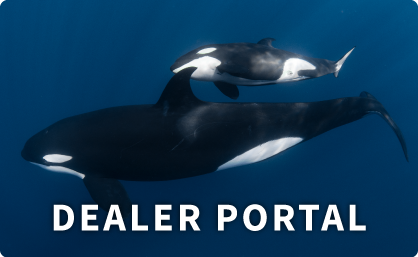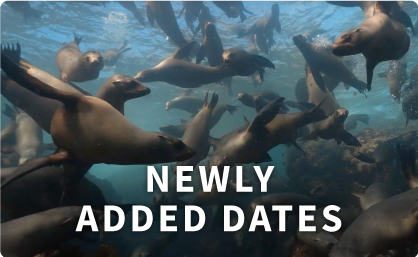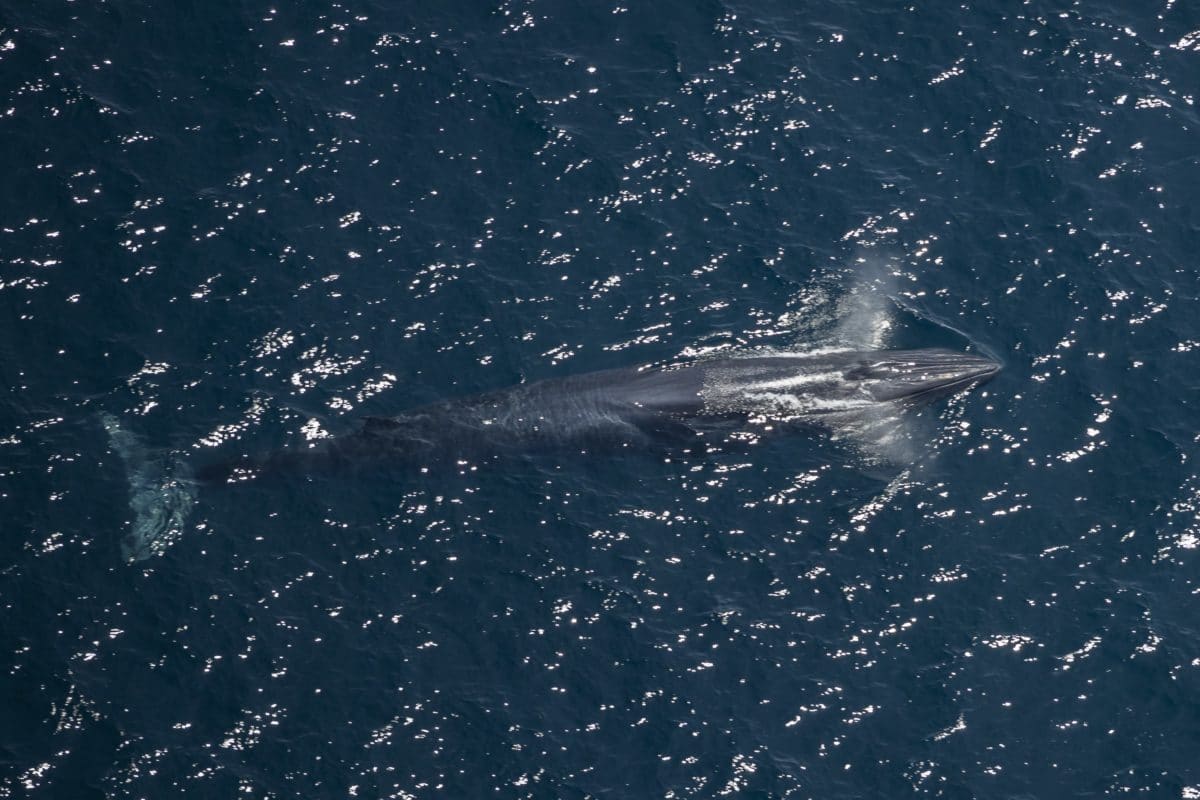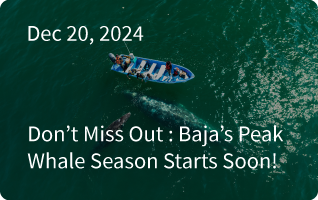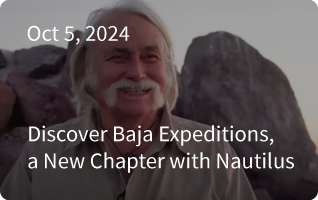On May 11th, I was called to fly onboard “Scout”, our new Spotter Plane designed solely to help find animals from the skies. My mission was to photo-document everything we saw that day from above, as well as to write it down in order to share it with researcher partners of us, in order to get valuable data on the biodiversity in the area.
Along with the awesome pilot, Katie, we took off from the La Paz airport at around 9 AM. We directly headed south towards the La Ventana / Cerralvo Channel area, where the Gallant Lady currently was and the guests onboard were beginning their day in search of the immense possibilities of wildlife encounters this season bring to the area.
As soon as we flew over the water, it took us around 5 minutes to spot our first sighting of the day. It was a huge school of munk mobulas (Mobula munkiana). Thousands of them in a perfect circular shape formation, swirling round and round, while some of them leaped out of the water. It was incredible to see them from that perspective, as I had only ever seen them directly at the same level or underwater. We reported our sighting to the Gallant Lady, but they were too far south, where they had also reported seeing mobulas.
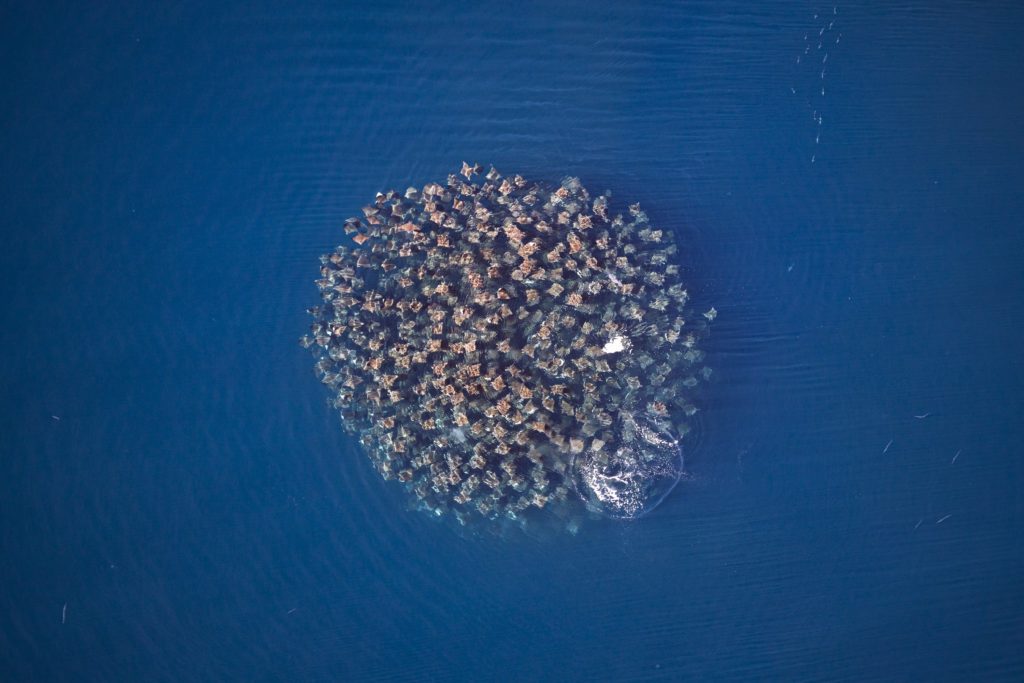
Exactly 7 minutes later, as e continued to fly south, we spotted a pod of 16 bottlenose dolphins (Tursiops truncatus). They were cruising very calmly on the surface, and some of them were playing with each other by turning their bodies around each other and biting their fins. A beautiful behavior to witness from above.
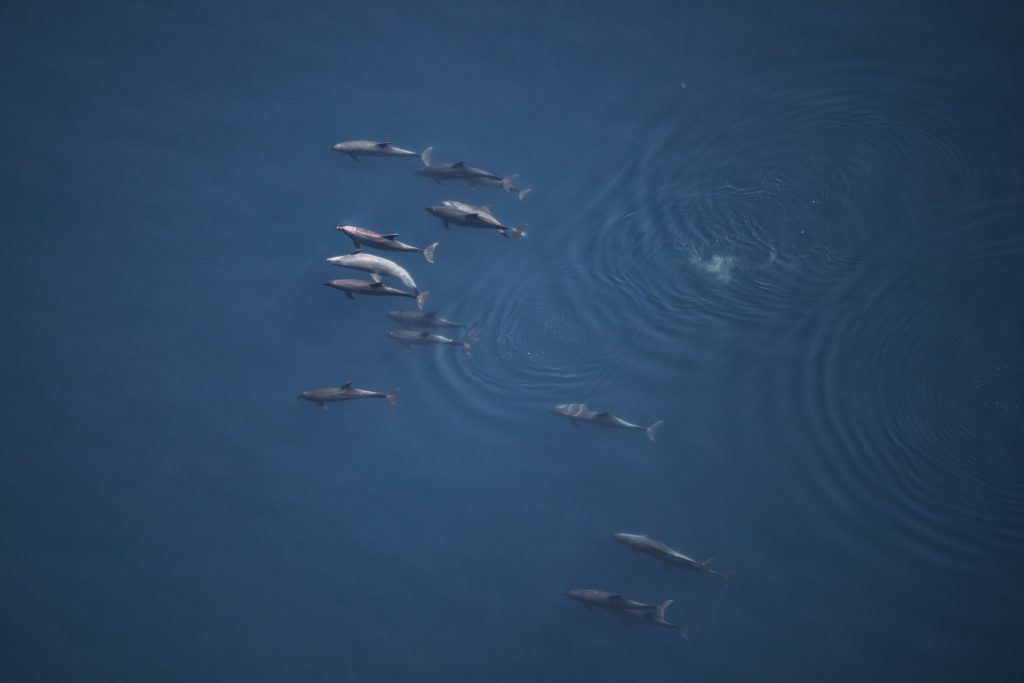

As we continued our search, we saw something at a distance that appeared like a boat leaving an enormous wake behind it. At first, we didn’t really pay much attention to it, but after zooming in with my telephoto, I told Katie that I did not see a boat, and she quickly turned the plane to go check it out. As we got closer, to our surprise, we could then tell clearly that it was a megapod of dolphins. Hundreds and hundreds of them swimming in unison quite quickly headed up north towards Espiritu Santo Island. We could see the ones closest to the surface, but there were definitely much more as we saw some dive deeper after taking a breath and losing them from our sight.
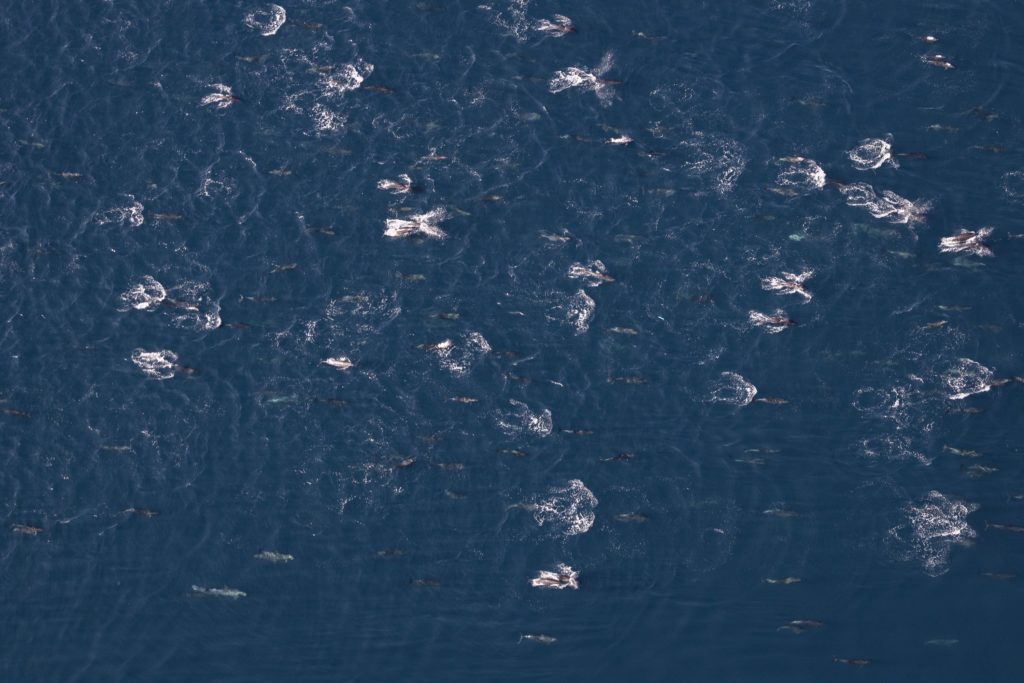
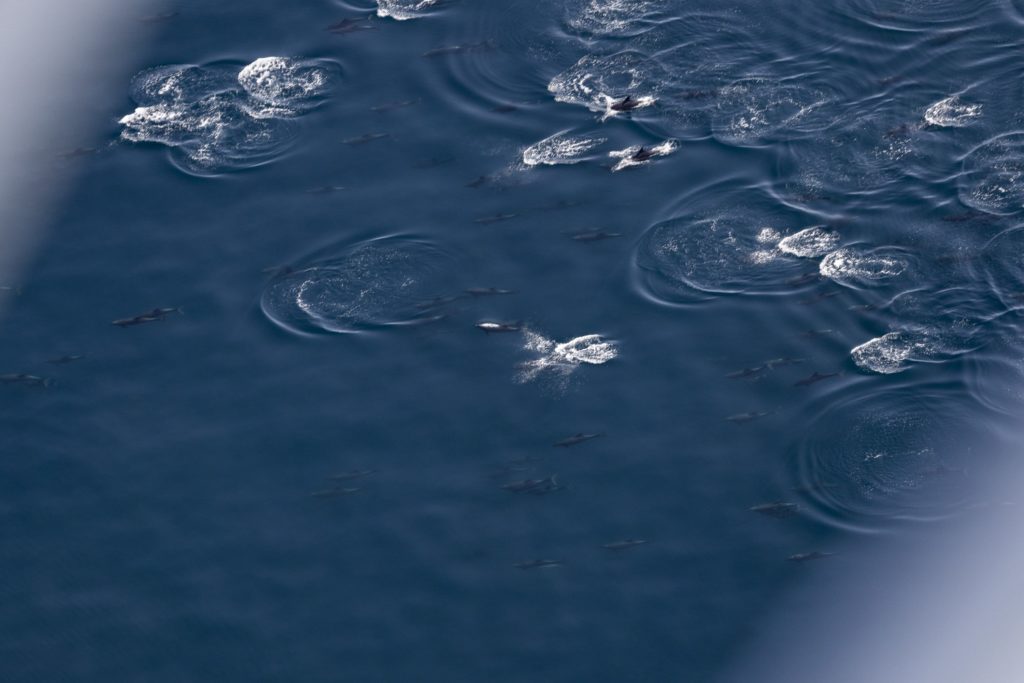
As the Gallant Lady was south of Cerralvo Island, we started to head their way so, in case we saw anything interesting close to them, they could get quicker to it. After about half an hour, Katie spotted something at a distance. Doing one of her sharp turns, which was an amazing feeling to be able to see the ocean right below us through the door opening, we got closer and began to have a clearer view. A brighter spot on the surface, which little by little began to get bigger and take shape; It was a huge Whale Shark (Rhincodon typus).
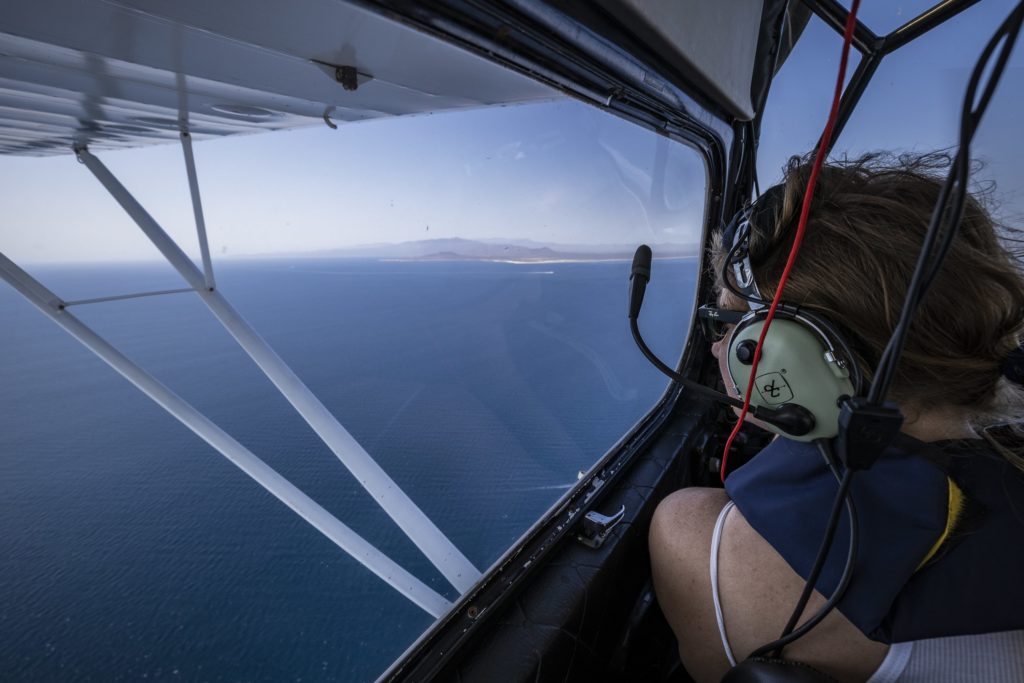
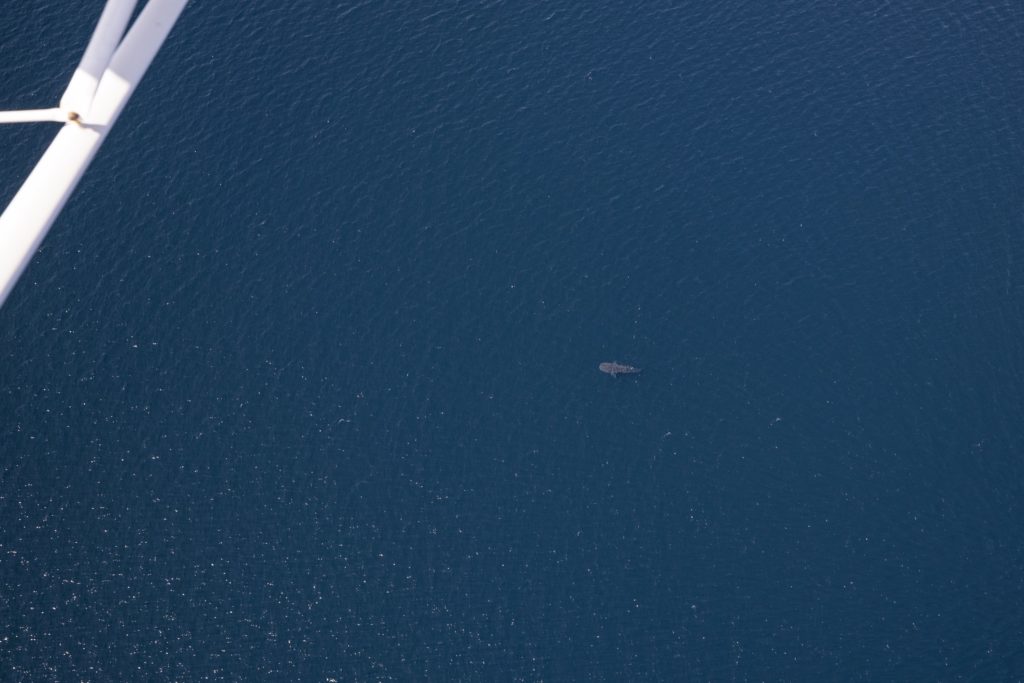
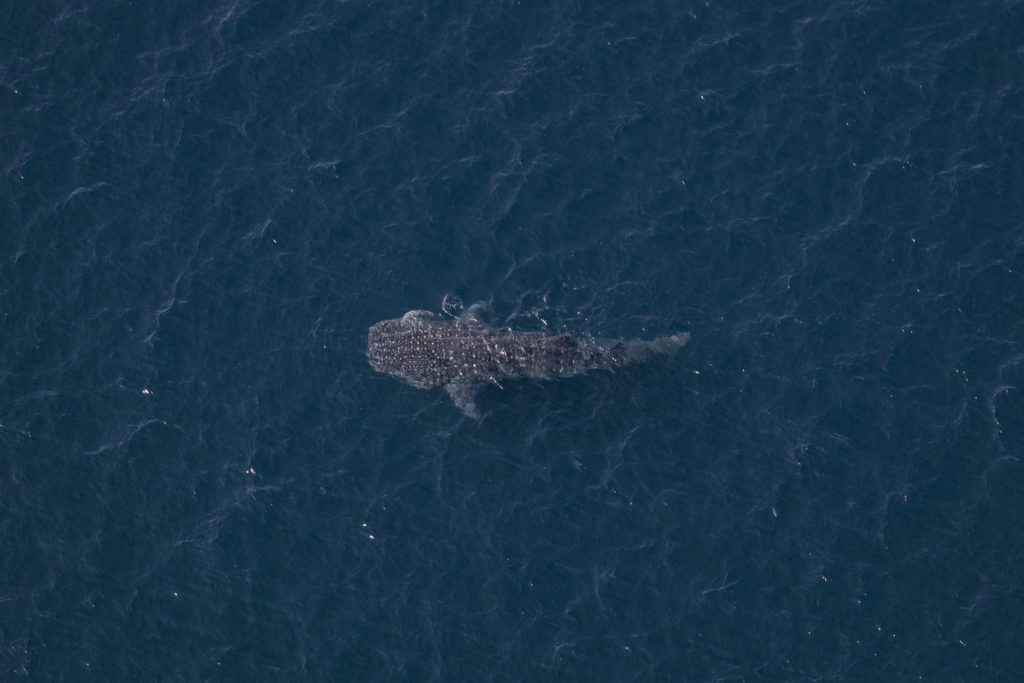
We let Captain Gordon, onboard the Gallant Lady, know of the Whale Shark to give him the exact coordinates few saw it, and he also told us they had seen a whale in the area they were. We immediately went over to help spot easier what it was exactly. As we got to them, Katie did a close fly-by’s the Gallant Lady and we could see all the clients and crew’s hands waving at us and cheering.


We scouted the area for a few minutes and…. BINGO! We spotted the whale they had seen. It was tricky to tell what species it was exactly, but after it came up to take a breath, and with the help of a very powerful zoom lens, we were able to recognize it was a Bryde’s Whale (Balaenoptera brydei) by the unique parallel ridges they have on their snout. Definitely, a unique encounter, as they are not so common to see around.
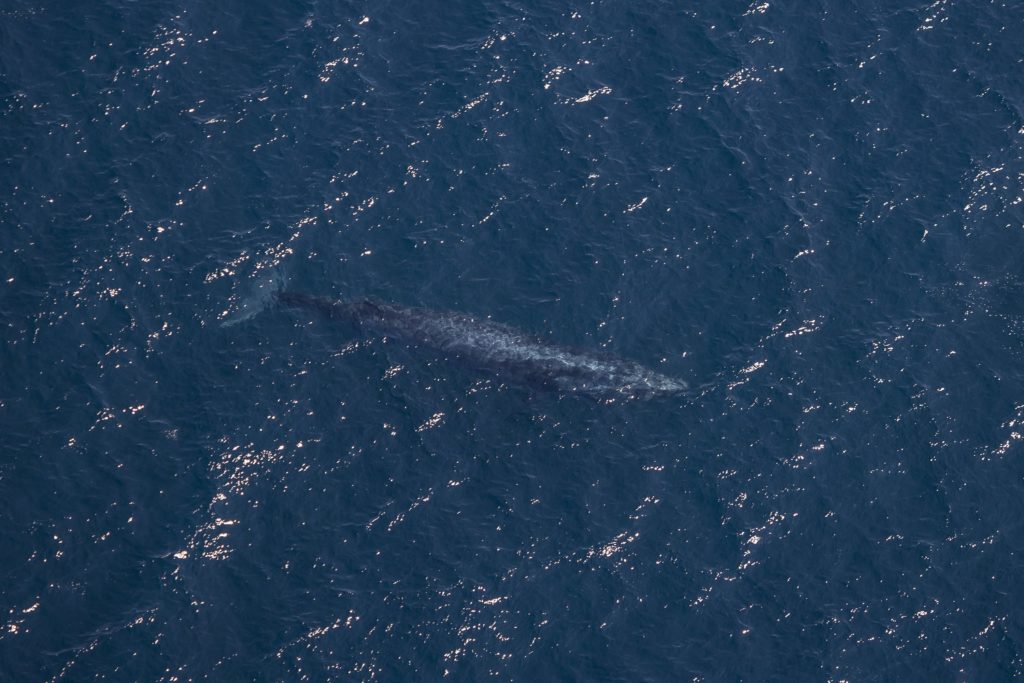
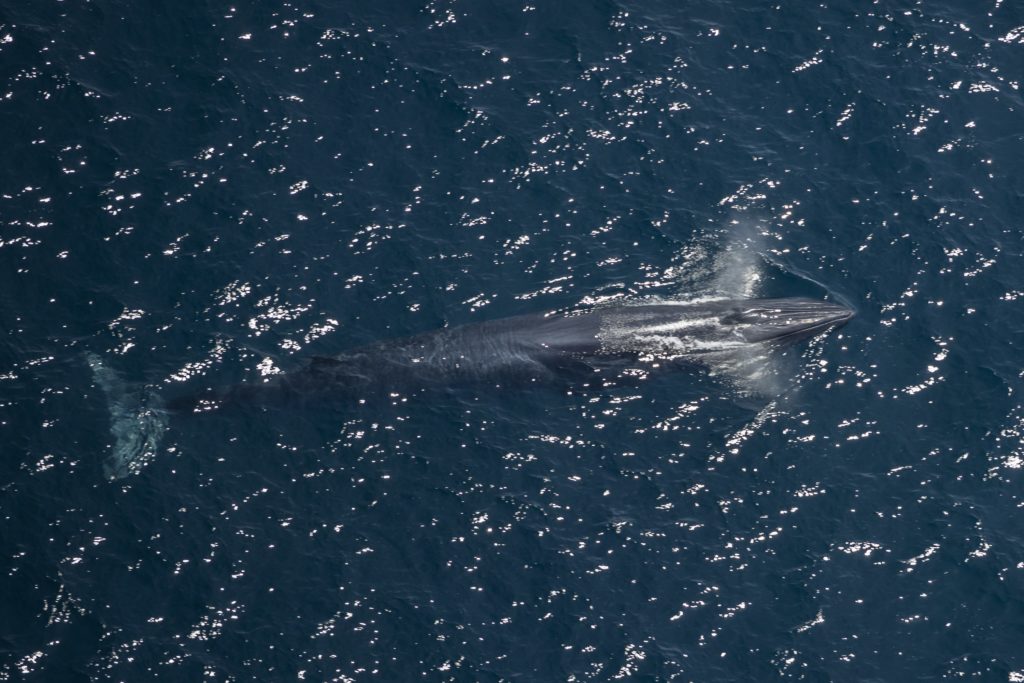
As the day continued, we crossed the Cerralvo channel a number of times and covered both the coastline of Cerralvo Island and the mainland. Besides the big animals, which we were mostly after, we saw enormous schools of fish, countless turtles, a shark, and stunning landscape views.

That day, the Nautilus Westerly was also on an expedition in the same area, especially looking for Mobula interaction. Being the best season to see these animals, we spotted them a number of times, but we definitely were keen on finding the bigger schools for the clients to see the might of their migration in what seems as infinite numbers. As we headed north to their position, we spotted a decent-sized group, where we stayed circling for some minutes while they made their way down. It was even like playing a game, as Katie would literally tell one of the guides on the skiff over the radio “warmer, warmer, colder, warmer” as they got close to the school of Mobulas. They finally made it and we saw as the guests got in the water and could swim next to the school.

We didn’t have much more fly time after that, so we decided to do our last run through the channel to try to find any other big animals. As the wind had picked up a bit, it became slightly harder to be able to tell things from a distance as white caps in the water were playing games with us. Just as we were on our way to land, I spotted something big. I told Katie and she lowered the plane toward that direction; It was a Fin / Finback Whale (Balaenoptera physalus). I quickly recognized it, not just by its immense size, but also by the unique right lower lip, which is white only on that side and clearly visible even from the air. As we would see it and maneuver the plane to come around it, a second one appeared out of nowhere next to it, probably being submerged below our possible sight. Definitely the “cherry on top of the cake” to finish our day with. After giving the location to the Gallant Lady, we finally made our way back to land, ending what I would definitely consider the most amazing flight of my life.
- In-house Photographer Dan Taylor

